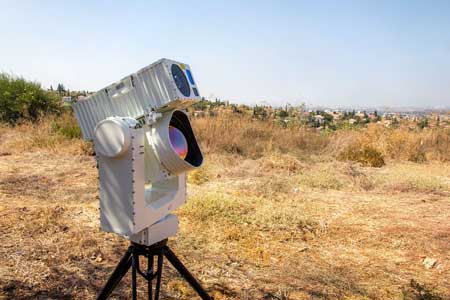


On the Lookout – Border Surveillance (by Shephard Media)
Extract from the article
A vital element of border protection is the use of sensors tied into a wider C2 network, allowing personnel to detect threats and deal with them in a timely manner. Multiple solutions are available on the market to fulfil this crucial capability.
International disputes are often the result of rising tensions between neighbouring countries, so the monitoring of borders, be they land or coastal, is often a key objective of many nations. Whether states are already involved in a conflict or there are tensions that need to be monitored, surveillance systems can help keep track of movements between and within countries, and a number of technologies are being deployed in this capacity.
Highlighting the USP
Another provider of EO/IR sensors for border surveillance is Controp Precision Technologies. ‘The distinctive [product] is the MEOS [Modular EO/IR Observation System], and we have several options depending on the distances you want to observe,’ said Nir Bar-Natan, marketing director at the company, adding that there are 250mm, 450mm and 720mm versions of the hardware.
‘The gimbal is built like a T-shape, so on one side is the EO, and on the other is the IR. On the top, we can select between a laser rangefinder and a gyro-module to stabilise this T-shape with a specific gryo box. Even in land applications, stabilization can influence the image, especially over long distances with a narrow field of view,’ he continued.
One of Controp’s more distinctive offerings is the SPIDER, which – in addition to the optional laser rangefinder, thermal imager, day camera, spotter and laser pointer – has what Bar-Natan describes as an ‘EO radar capability’, whereby it can carry out a panoramic scan and compare images collected over a certain period of time. ‘This is something that is quite unique, and I think there are only two other companies that have this technology,’ he explained.
‘Because it is not transmitting anything like a radar does, it cannot be jammed, and this is good for keeping your location hidden.’ The EO radar is one of the key capabilities of the Spider, and Bar-Natan said there are plans to roll it out to more of the company’s products in the future.
Controp also offers the SPEED-LR, a 65kg system that has a 1,200mm camera for surveillance over longer distances and a U-shaped design for high stabilisation. The largest and newest system, the Speed-ER, has a detection range of 40km. ‘The main application for this EO system is coastal surveillance, and there is no limitation because you can put it on a high tower on a mountain and make observations deep into the sea,’ Bar-Natan told Shephard.
The SPEED-ER includes thermal imaging, SWIR, a day camera and laser rangefinder, and it can operate in challenging meteorological conditions. The SWIR capability aids this, as well as providing sensing capability over long ranges. The focal length of 2.5m is unique for this sensor type, according to Bar-Natan.

‘The capability of the SWIR is a recent development, and we are seeing a lot of demand for it, particularly for the land and maritime systems, when large distances in difficult conditions need to be monitored,’ he said.
‘We see it in all of the tenders, and Controp has several solutions for that. The SWIR is becoming very popular.’ He noted that another development for the company is adding an HD capability to the thermal camera: ‘HD in the day camera is relatively cheap, but an HD thermal camera is much more expensive, yet we are seeing customers more and more require this kind of capability,’ he said. ‘The main advantage is that you can have a wider field of view.’
Controp can provide its own C2 technology to support the payloads, particularly for standalone systems, although they can also be integrated via IP to larger C2 infrastructure. While coastal and land borders worldwide are similar – in that they are a weak point at which unwanted activity can transfer from one country or site to the next – they vary in size, and the movement between countries may not be as much of a contentious issue in one region as it is in another.
Reading: On the Lookout – Border Surveillance (by Shephard Media)